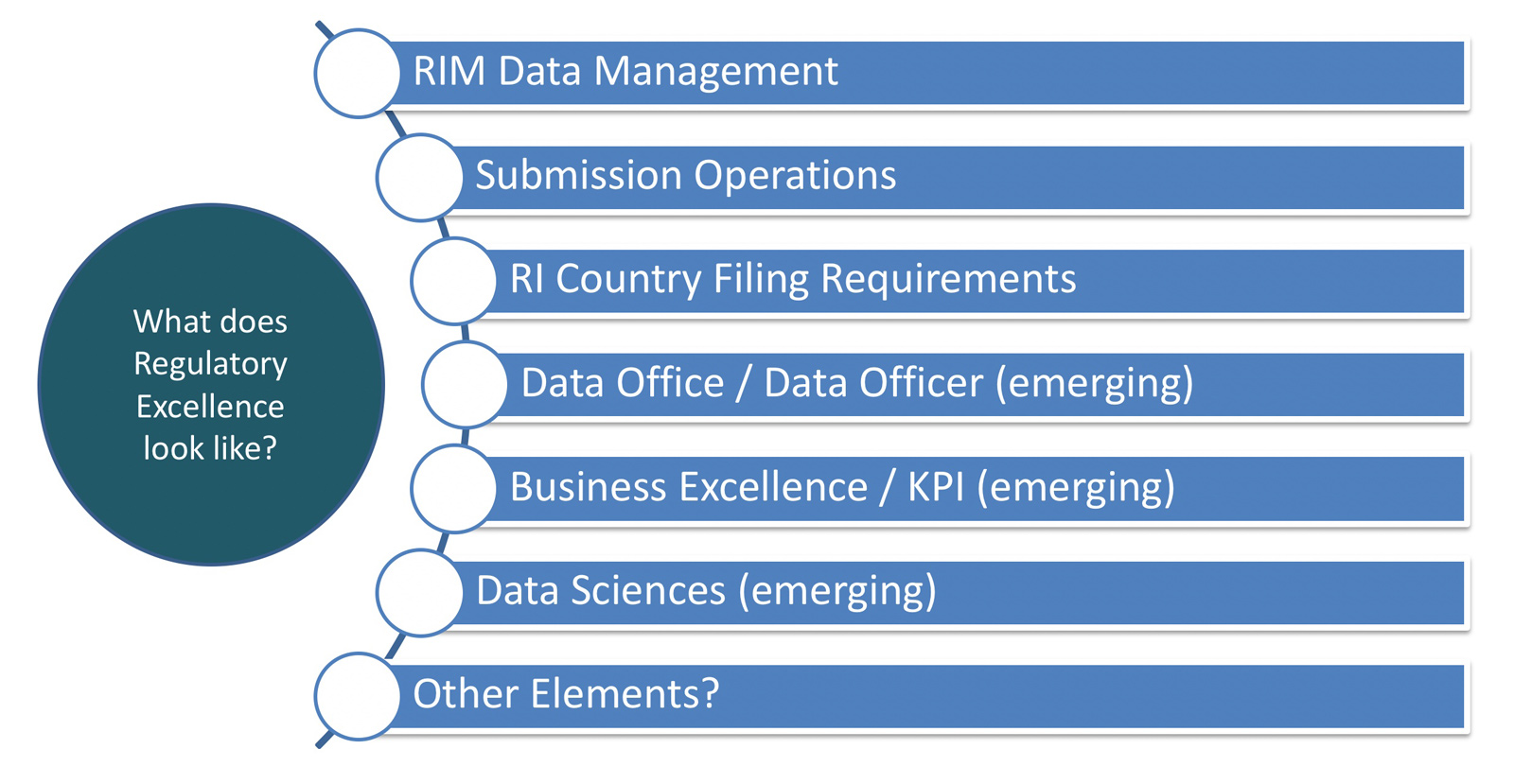Is a Regulatory Center of Excellence a solid organization strategy?
By Katherine Yang-Iott
In recent months, the concept of a Regulatory Center of Excellence (CoE) keeps popping up in conversations with our clients and research community. It’s happened often enough for our core team to wonder if Regulatory CoEs develop into a leading organizational strategy as a way to better support regulatory organizations as they continue to evolve. And if so, how does it develop and what could it accomplish?
From our perspective, the next stage of the Regulatory Organization evolution centers around establishing Data Quality and Governance, better Business Process Management, maturing Strategic KPIs, and improving Regulatory Intelligence. The key organizational dimensions to consider in order to evolve in these areas are preparing for (and predicting) future skillsets and capabilities, shaping the ‘right’ organizational culture, and harnessing the power of technology. In essence, success depends on aligning these dimensions with people and processes. (*G&A insight – Start small, determine what you can do with what you have and progress from there. The key is knowing how to prioritize)
Evolving your regulatory organization is no small feat but a Regulatory CoE could be the answer to help orchestrate it. Traditional Centers of Excellence are designed to ‘drive change by driving action’ and usually consists of SMEs (leaders, decision makers, and internal/external specialists) with deep knowledge and experience. The idea is to channel the collective expertise to drive home the theme of Regulatory Excellence, both as a concept and in the performance (what that looks like depends on the company).
There are more common ‘excellence’ subgroups in Regulatory such as Business Excellence or Operational Excellence but perhaps these sit within a Regulatory Center of Excellence where the maturity of these programs are managed and maintained by the Regulatory CoE. The value of a Regulatory Center of Excellence might exist in its ability to close gaps, establish feasibility (pilot or test programs) and introduce standards and practices backed by outcomes driven research.
Organizational agility is another topic that we hear a lot about. Either the loss of agility as companies grow and scale (more structure = more rigidity), the lack of agility due to lack of innovation (burdens and hurdles of outdated systems or complicated technology), or the desire to improve agility as a mindset (we’re willing to try new things! Failure is ok!). Securing the ‘secrets’ for practicing agility can sometimes feel like searching for the lost city of gold. I mention agility here because the construct of a center of excellence often includes the ability to behave differently than other organizations within the company, opening up the door to live out the agile organizational way, a functional version that perhaps may not be attainable on a larger scale.

What can a Regulatory Center of Excellence do? Orchestration vs. Incubation
Whether your CoE is structured more to orchestrate the many evolving Regulatory activities or as a knowledge sharing incubator to guide best practices and set standards, evolving your organization will continue to be a complex and an on-going process. Having a Regulatory CoE to not just define what Regulatory Excellence looks like, but also having the power (decision making capabilities + agility) to make it happen effectively and efficiently is a convincing argument to consider utilizing this approach as a solid organization strategy.







